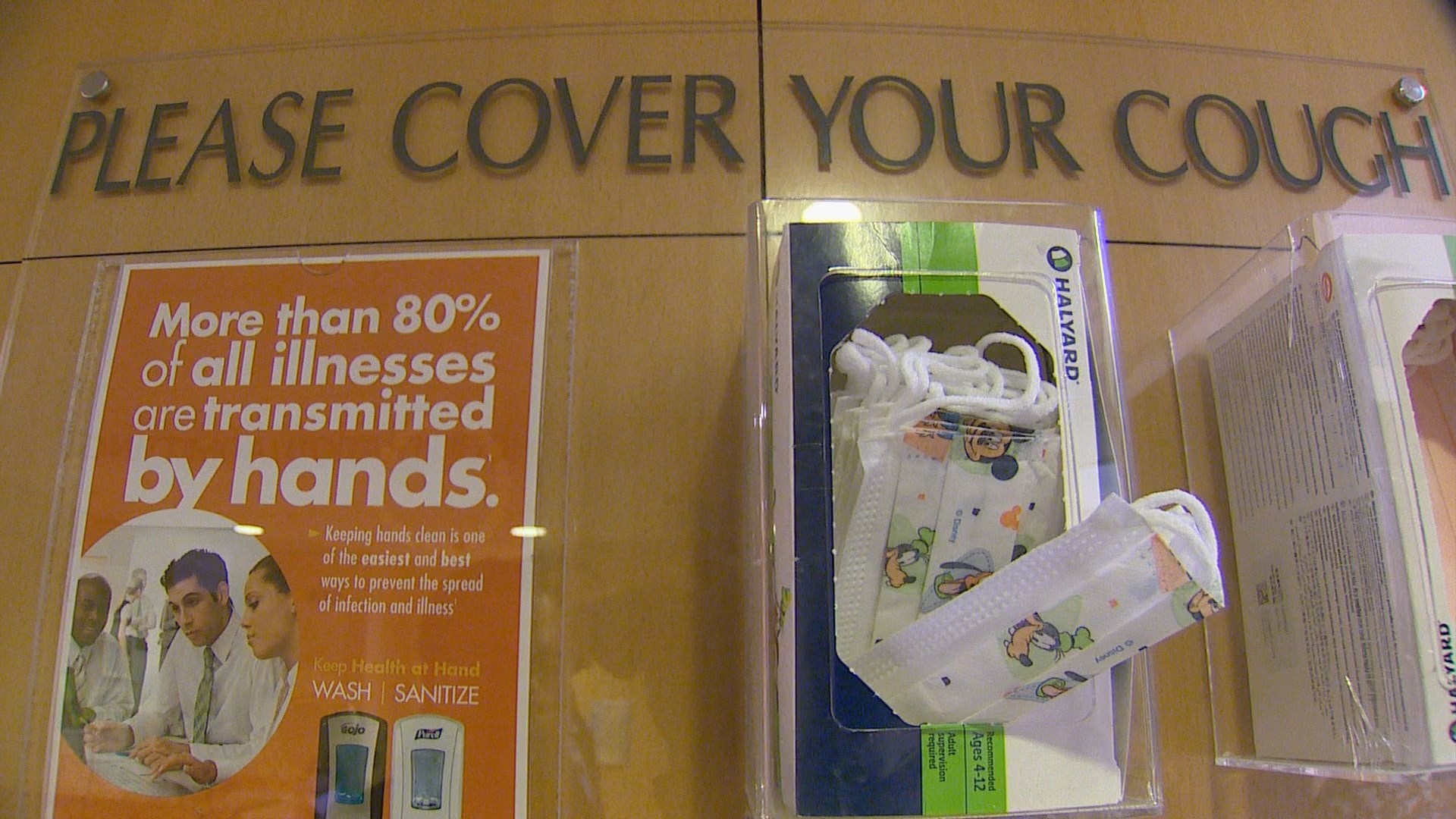We're just two weeks into the flu season and already state health officials say we've reached "epidemic" levels, with four new deaths reported in the past week.
Patients are flooding emergency rooms in Western Washington, complaining of flu symptoms. In Seattle, Swedish Hospital said it received 20 flu patients at its First Hill location as of Wednesday, but three or four more times than that are walking into their ERs at their various other locations.
Multicare Health Systems, which has hospitals in King, Pierce, Snohomish and Thurston counties, saw the weekly number of cases of one strain of flu climb from 27 to 322 in December.
Around King County, the number of flu cases at emergency rooms is the highest it's been in five years, says the county's head epidemiologist Dr. Jeff Duchin, and Snohomish County says the number of hospitalizations has been doubling each week since early December.
In Thurston County, the overloaded emergency rooms prompted health officials at Providence St. Peter Hospital to activate a 'Disaster Medical Control Center' for the first time in ten years.
It's an emergency measure that's usually only used during mass casualty incidents.
"We were in a situation where in Thurston County, our two hospitals were saturated, we were at capacity, and could no longer take care of patients safely -- ambulance patients, there was nowhere to put them," said Malloree Fontanilla, who is a registered nurse in the Emergency Room.
Fontanilla also oversees the DMCC, or 'Disaster Medical Control Center' when it is activated. She's worked at the hospital for nine years and though she's gone through many DMCC training drills, this is the first time the hospital has activated the real thing.
"Yeah, it is very rare," she said. "We felt like on Tuesday night, we needed to get help from our other Region Three hospitals to support the demand that was occurring."
The influx of patients coming in with flu symptoms is the main reason St. Peter and nearby Capital Medical Center were at capacity on Tuesday.
On a typical day, five percent of St. Peter's patients might come in complaining of flu symptoms. Right now, that number has quadrupled, with 20 percent of the hospital's patients being treated for the flu or other upper respiratory symptoms.
As of Wednesday, Capital Medical Center was still at capacity and unable to accept ambulance patients in the emergency room.
When the DMCC is activated, nine hospitals in Thurston, Mason, Lewis, Pacific, and Grays Harbor counties start working together to identify available hospital beds and direct ambulances to the facilities that aren't yet at capacity.
Fontanilla says it's about trying to serve patients quickly and efficiently and provide the best possible care.
She says patients experiencing flu symptoms can help those inundated emergency rooms by opting to visit their primary care physician or an urgent care facility, instead of going straight to the ER.
"It's concerning because we're early, we usually don't see the flu season peak until February or March," she said. "It's concerning because where do we go from here? It's only going to get worse, is the feeling I believe we have at this time."
Related: Families grapple with flu epidemic
Paul Throne with the Washington State Department of Health says nine people have died this season from the flu, but Duchin says there could be more since flu deaths are often under-reported.
Snohomish County officials confirmed Thursday five new deaths linked to the flu. Officials don't know if those four people - three people in their 80s, one in their 90s, and one in their 50s - received a flu shot this year. Snohomish County is also reporting the highest number of flu hospitalizations since the county started keeping records in 2009.
Throne says this year's flu strain - H3N2 - has reached an "epidemic" level this year. While every year the flu reaches epidemic levels, Throne says cases are "ramping up" and the flu season could still peak.
Throne adds hospitals are not required to report the number of people with the flu, so officials don't know the exact number of flu cases in the state.
The flu vaccine takes about two weeks to kick in. It's too early to say how effective the vaccination is this year, but Duchin says early signs are good.
Health officials emphasize getting a flu shot, washing your hands and staying home. Book an appointment with your family doc or urgent care facility if you have symptoms.
Here are more flu facts from the CDC
What is Influenza (also called Flu)?
The flu is a contagious respiratory illness caused by influenza viruses that infect the nose, throat, and lungs. It can cause mild to severe illness, and at times can lead to death. The best way to prevent the flu is by getting a flu vaccine each year.Signs and Symptoms of Flu
•People who have the flu often feel some or all of these signs and symptoms:
•Fever* or feeling feverish/chills
•Cough
•Sore throat
•Runny or stuffy nose
•Muscle or body aches
•Headaches
•Fatigue (very tired)
•Some people may have vomiting and diarrhea, though this is more common in children than adults.
*It’s important to note that not everyone with flu will have a fever.
How Flu Spreads
Most experts believe that flu viruses spread mainly by droplets made when people with flu either cough, sneeze or talk. These droplets can land in the mouths or noses of people who are nearby. Less often, a person might also get flu by touching a surface or object that has flu virus on it and then touching their own mouth, eyes or possibly their nose.
Period of Contagiousness
You may be able to pass on the flu to someone else before you know you are sick, as well as while you are sick. Most healthy adults may be able to infect others beginning one day before symptoms develop and up to 5 to 7 days after becoming sick. Some people, especially young children and people with weakened immune systems, might be able to infect others for an even longer time.
Onset of Symptoms
The time from when a person is exposed to flu virus to when symptoms begin is about 1 to 4 days, with an average of about two days.Complications of Flu
Complications of flu can include bacterial pneumonia, ear infections, sinus infections, dehydration, and worsening of chronic medical conditions, such as congestive heart failure, asthma, or diabetes.
People at High Risk from Flu
Anyone can get the flu (even healthy people), and serious problems related to the flu can happen at any age, but some people are at high risk of developing serious flu-related complications if they get sick. This includes people 65 years and older, people of any age with certain chronic medical conditions (such as asthma, diabetes, or heart disease), pregnant women, and young children.
Preventing Flu
The first and most important step in preventing flu is to get a flu vaccination each year. CDC also recommends everyday preventive actions (like staying away from people who are sick, covering coughs and sneezes and frequent handwashing) to help slow the spread of germs that cause respiratory (nose, throat, and lungs) illnesses, like flu.
Diagnosing Flu
It is very difficult to distinguish the flu from other viral or bacterial causes of respiratory illnesses by symptoms alone. There are tests available to diagnose flu. For more information, see Diagnosing Flu.
Treating
There are influenza antiviral drugs that can be used to treat flu illness.
Related stories and resources:


